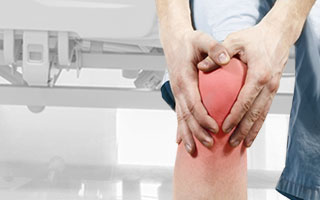Bone Health - Symptoms
The biggest challenge with osteoporosis is that it does not have any symptoms. Most commonly, the patient will not know that they are suffering from osteoporosis until they end up fracturing their bones easily. The most common areas for fractures are the wrists, the spine and the hip.
Certain pointers to suspect osteoporosis are as follows:
- If you suffer from non-specific pain all over the body, sometimes it is debilitating, leading to immobility.
- The bone feels tender when touched.
- One can look for the signs of parathyroid hormone disorder such as body pains and joint pains, nausea, heart burn and tiredness.
Diagnosis
Our doctors will evaluate the patient bone health, identify their risk factors and will recommend bone density serum calcium tests. The results will help our doctors gauge the patient bone density and determine the rate of bone loss. By evaluating this information and the risk factors, our doctors can assess whether the patient can be a candidate for medication to help slow down bone loss.
The diagnosis will be done by our doctors by evaluating the patient medical history, bone density test and certain blood tests.
- medical history that includes identification of causative factors such as hormonal and mineral deficiencies, family history, history of medications and the patient
- blood test is necessary to rule out underlying diseases, namely:
- serum calcium levels;
- serum vitamin D levels;
- in case of parathyroidism, serum phosphorus and alkaline phosphates;
- in case of thyroid dysfunction, the thyroid function test; and
- in case of kidney disorders, the ferritin levels.
- Scans:
- Bone mineral density - to determine the density of the bone, it is the first step in prevention of osteoporosis. The results will help our doctors to understand the bone density and determine the patient rate of bone loss.
- Dexa scan (DUAL X-ray absorptiometry) - measures the bone density to identify the fracture risk; the areas include the spine, the hip and the total bone density.
- Ultrasound and CT scan can be advised in certain cases, but may not be necessarily advised in all cases.
Complications
Physical disabilities:
- easy fracture - due to osteoporosis, it becomes painful and takes a long time to heal;
- kyphosis - loss of spinal curvature;
- disability due to restricted movements, inability to perform day-to-day activities;
- spinal compression leading to reduction in height of a person and may lead to nerve compression, leading to back pain and radiating pain in the legs and feet;
- disfigurement to the compression of the spine; and
- secondary infections such as pneumonia, bed sores and urinary tract infections due to immobility.
Emotional complications:
- decreased quality of life, pain, lost work days and disabilities;
- depression and negative body image caused by anxieties about being fragile;
- a sense of restriction and limitation;
- lack of confidence because of the inability to dress up, stand and walk
- fear of falling, making the patient anxious when in crowded places;
- fear of the loss of independence;
- financial burden due to hospitalisation and absenteeism at work;
- inability to carry on with the daily routine;
- feeling of being helpless and alienated; and
- strained relationships with family and friends.




